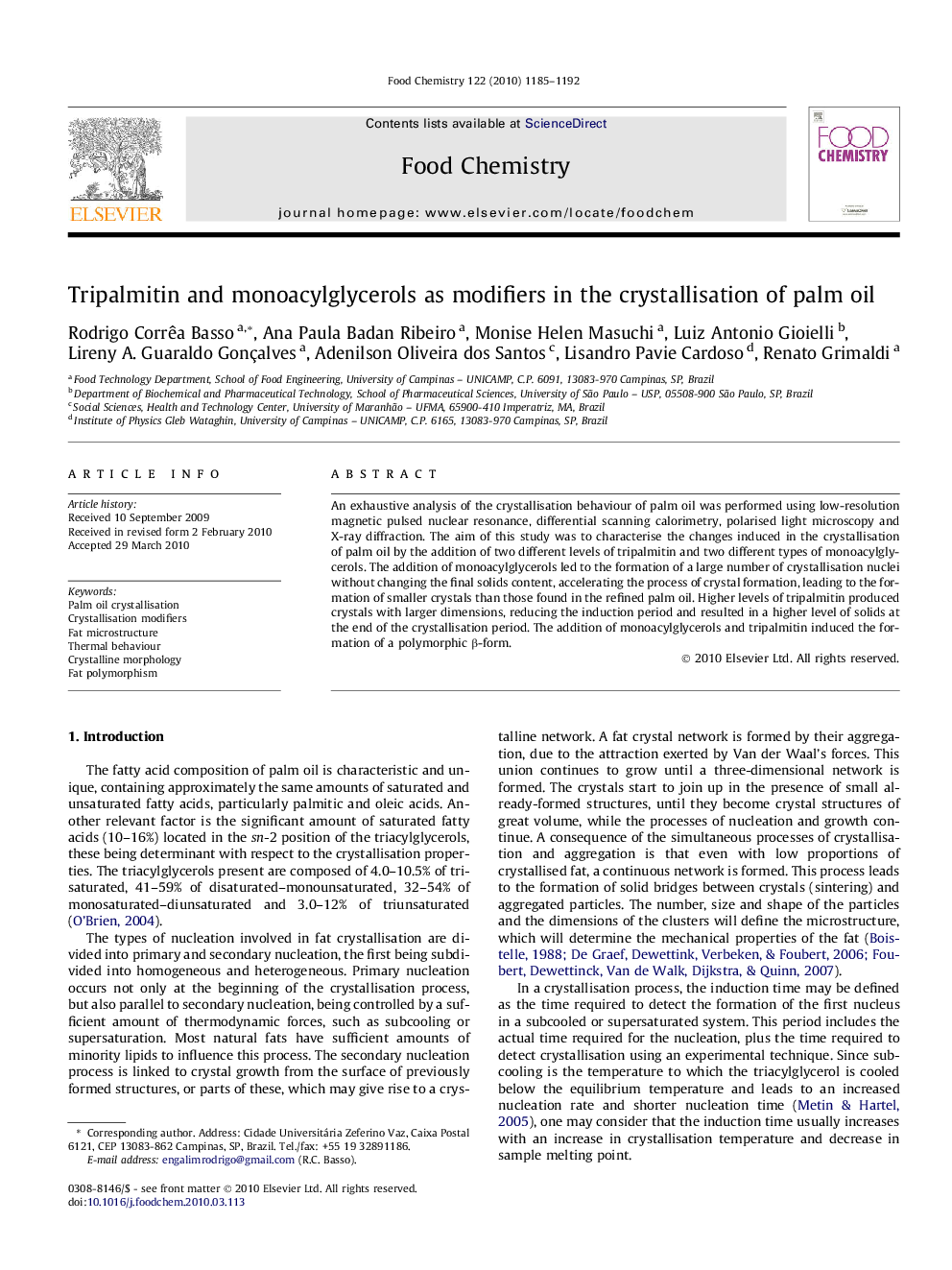| Article ID | Journal | Published Year | Pages | File Type |
|---|---|---|---|---|
| 1185161 | Food Chemistry | 2010 | 8 Pages |
An exhaustive analysis of the crystallisation behaviour of palm oil was performed using low-resolution magnetic pulsed nuclear resonance, differential scanning calorimetry, polarised light microscopy and X-ray diffraction. The aim of this study was to characterise the changes induced in the crystallisation of palm oil by the addition of two different levels of tripalmitin and two different types of monoacylglycerols. The addition of monoacylglycerols led to the formation of a large number of crystallisation nuclei without changing the final solids content, accelerating the process of crystal formation, leading to the formation of smaller crystals than those found in the refined palm oil. Higher levels of tripalmitin produced crystals with larger dimensions, reducing the induction period and resulted in a higher level of solids at the end of the crystallisation period. The addition of monoacylglycerols and tripalmitin induced the formation of a polymorphic β-form.
